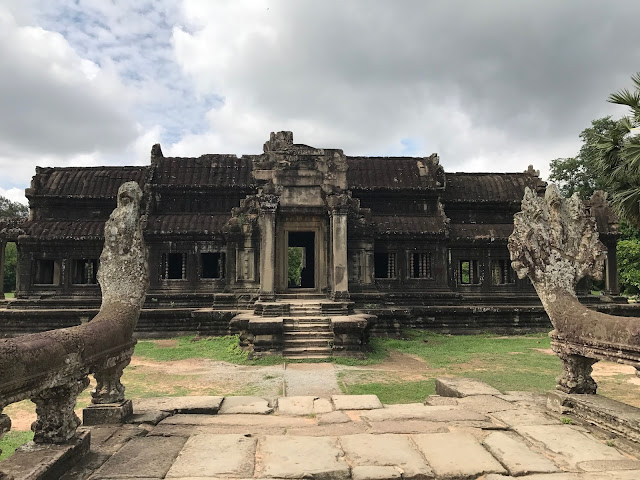This post is part of my Cambodia travel and I hope I could finish my other post of a more detailed information of my trip in Cambodia. Actually, my trip was more focus in Siem Reap. The province where the largest religious monument is located which is the Angkor Wat.
To give a much clearer picture of what to expect of Angkor Wat it is best to explain the whole Angkor Complex. This is a bit confusing when you are doing your itinerary and looking for details on how to plan your trip. The Angkor Wat is located within the Angkor Complex along with other temples like Angkor Thom and Bayon Temple.
To be able to visit Angkor Wat and other temples you need to buy an Angkor Pass. A single day pass cost $37.00, a three-day pass is $62 which is valid for ten (10) days and the seven-day pass is worth $72. The Angkor Pass contains your photo which will be taken when you buy the pass. The Angkor Pass is bought in the Angkor Conservation Area ticket booth on Charles de Gaulle road. It is the road between Siem Reap and Angkor Wat. There is a checkpoint before entering the Angkor Complex wherein you will be required to show your pass.
There are lots of tour package for Angkor
Wat but it is much cheaper to just hire a tuktuk driver to bring you to Angkor
Wat and to the other temples.
When you visit the temples you will notice
that they are usually surrounded by waters. A local explained to us that a pond
or river surrounds the temples so that it cannot be easily invaded. In Angkor Wat, the temple is also surrounded by a forest.
The Angkor Wat is built for the God
Vishnu. It was built during the reign of Suryavarman II. It was built as the
king’s state temple and capital city. Angkor Wat was gradually transformed from
a Hindu center of worship to Buddhism towards the end of 12th
century. Restoration of the temple started in the 29th century which
mainly involves the removal of the accumulated earth and vegetation.
Aside from its architecture, Angkor Wat is famous for its intricate carvings in the walls.
When you enter Angkor Wat, there is a corridor which is filled carvings. The corridor is less visited by tourists but is good place to start understanding how beautiful the temple is.
Since Angkor Wat is a temple which means it is holy, tourists must follow a dress code. Knees and shoulders should be covered. And they don't allow tourists to enter even if the shoulders are covered by just a shawl.
There are some parts of Angkor Wat which is less visited by tourists which is some of the best place to take some pictures.
There are still some monks in the temple. It is strictly prohibited to take a picture with a monk. If you really want to take a picture with them, you must ask permission first.
Aside from tourists there are also locals
whose main source of income is the tourism of Angkor Wat. There are
photographers who will take your picture with the background of the temple.
There are also stalls where you can buy some foods and souvenirs.
Tourists usually watch the sunrise over the Angkor Wat temple. We did our sunrise watching the next day since we bough a three day pass. Many tourists woke up early to watch the sunrise over the temple. Unfortunately it was a bit gloomy during our visit despite it is the dry season and the sun shine a faint color of pink and purple in the sky.
After a three or four hour tour in Angkor Wat temple, you may have an option to visit the Small Circuit temples or the Grand Circuit Temples.

















No comments:
Post a Comment